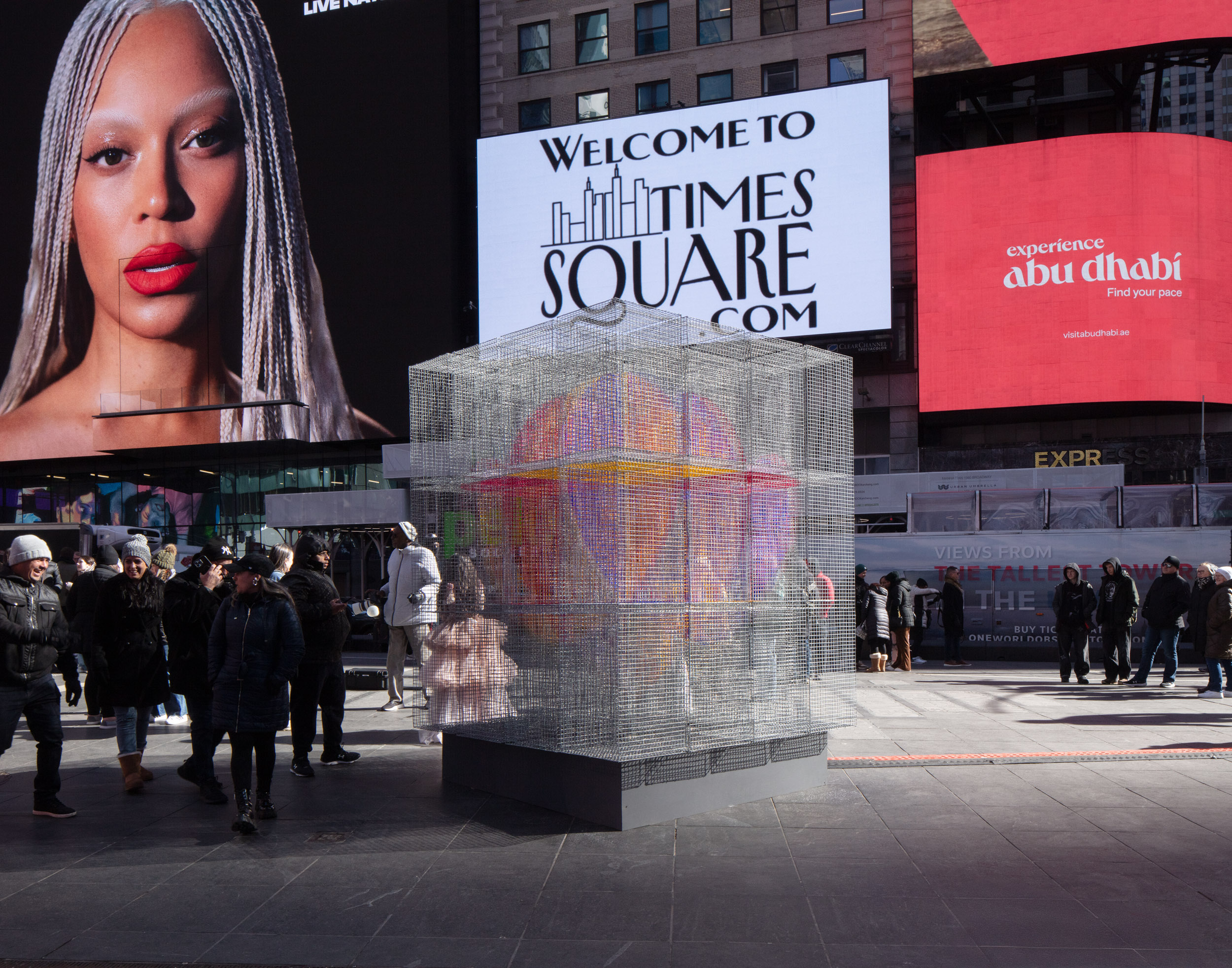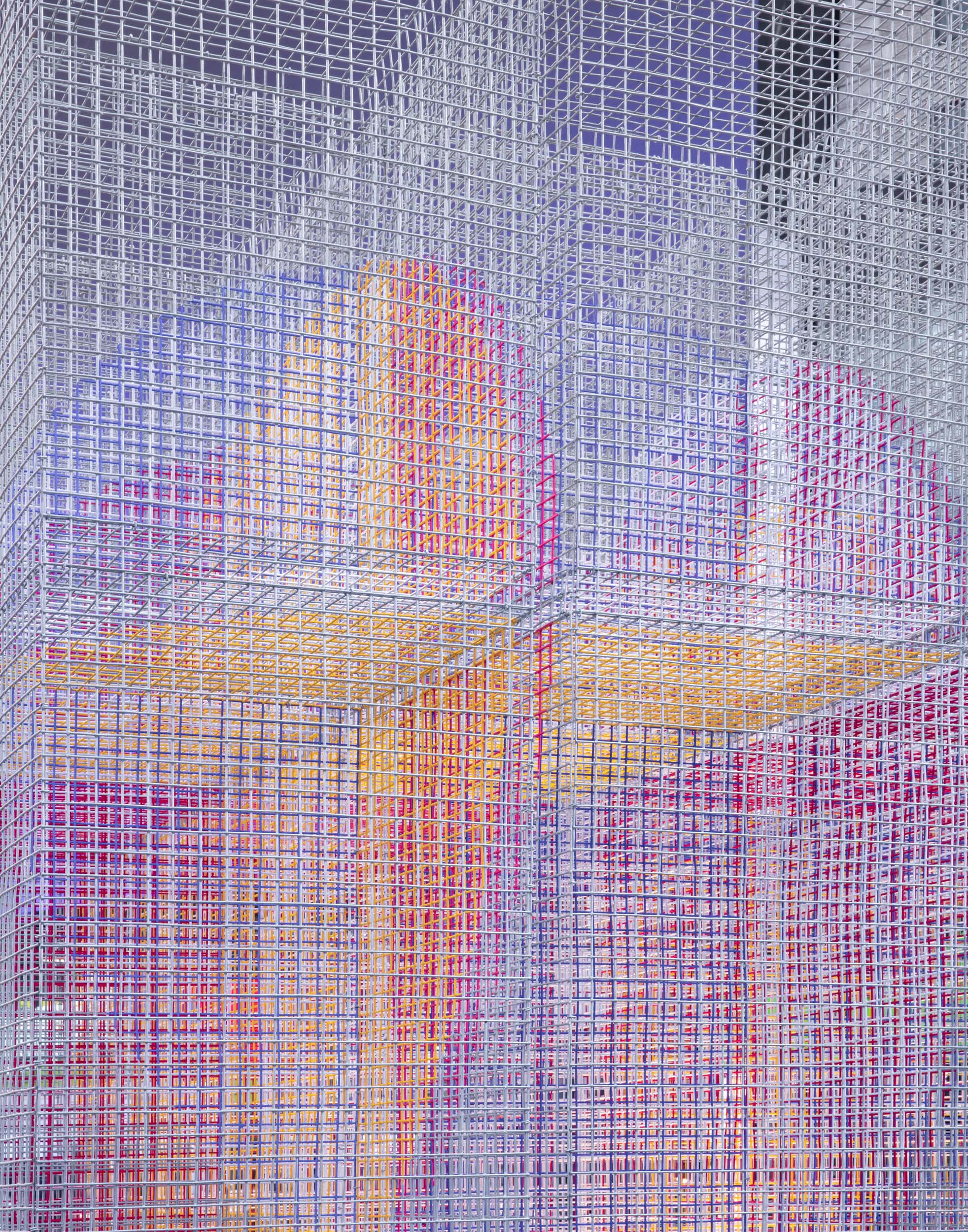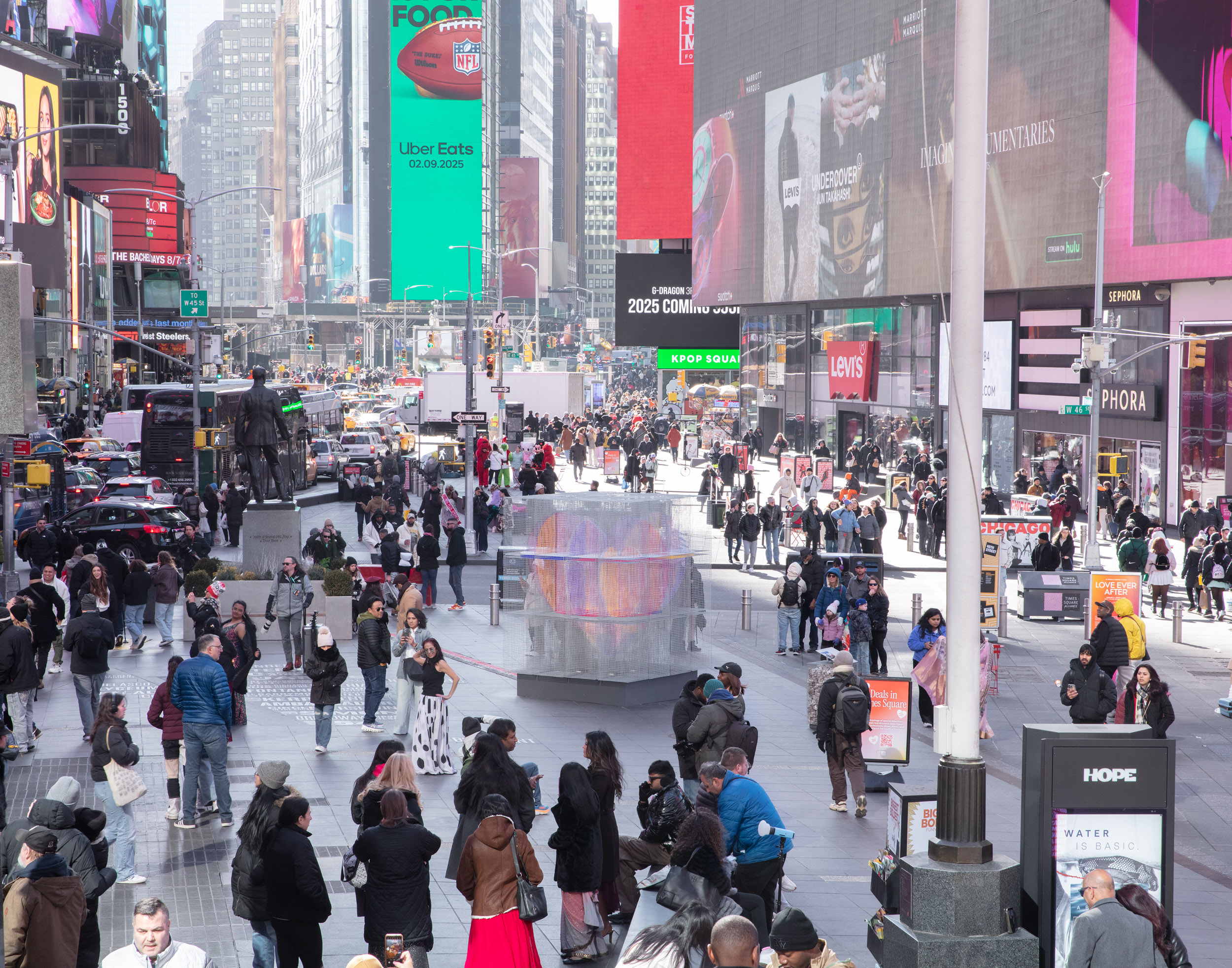Pernilla Ohrstedt Studio’s winning design for Times Square Arts’ annual Love & Design Competition reimagines public art as both a celebration of love and an ecological intervention.
Photos
Naho Kubota
Before it became the Big Apple, New York was the Big Oyster. In fact, before New York was even New York, when Lenape tribes inhabited Manhattan’s marshland, the harbour region was filled with oysters, its shorelines rich with reefs that filtered water and provided natural storm barriers. Such was their prevalence, the Dutch, when they arrived, dubbed Ellis Island the Little Oyster Island and Liberty Island the Great Oyster Island. Oyster shells were used for building roads, used in mortar – and were even burned to produce lime.
Today, however, most oyster shells from the city’s restaurants end up in landfills. Tapping into this history is London and New York-based practice Pernilla Ohrstedt Studio who has unveiled Love Ever After, a geometric heart sculpture that takes centre stage in Times Square for the month of February. The structure, composed of oyster cages, captures the shifting perceptions of love through its changing form and colour. Its presence in one of the world’s most iconic urban spaces extends beyond aesthetics, serving as a link between public art and environmental renewal.
Designed in collaboration with Billion Oyster Project, the installation aims to highlight how oysters have shaped New York Harbour’s history and future. The project reclaims and repurposes these shells, using them to build new reefs that restore marine biodiversity. After its exhibition in Times Square, Love Ever After will be dismantled, with its modular components placed along the city’s waterfront to continue this cycle of renewal.
Each oyster cage, coated in an environmentally safe paint developed by Swiss manufacturer kt.COLOR, will eventually serve as a research station, monitored by local volunteers. This pragmatic approach to design ensures that every element of the installation has an afterlife beyond its initial display.
In a space dominated by high-tech billboards and digital spectacle, the sculpture offers a striking contrast. Its three-dimensional grid reveals and obscures the heart shape depending on the viewer’s position, encouraging movement and interaction. The play of light on its surfaces shifts throughout the day, from morning reflections to evening illuminations courtesy of fixtures provided by Lucifer Lighting.
The project aligns with non-profit architecture organisation The World Around’s curatorial vision of design that considers the lifecycle of materials. As the first architectural commission for the nonprofit – which was founded by Beatrice Galilee – Love Ever After exemplifies the potential for public art to be poetic and purposeful.
Within Times Square’s constant churn of activity, the installation has become a site of pause and reflection. On Valentine’s Day it served as the backdrop for wedding ceremonies and proposals, embedding itself in the personal histories of those who gather beneath it.
For Ohrstedt, the project extends her practice of using unconventional materials to create spaces that resonate beyond their immediate function. “From the heart of New York City to its shoreline. Our sculpture will begin by broadcasting love for people, community and environment,” she explained.
As the final pieces of Love Ever After make their way to the harbour, the sculpture’s story continues. What began as a symbol of affection in Times Square will evolve into a network of living reefs.
“Love Ever After beautifully captures the intersection of art and environmental restoration, embodying how these two worlds can inspire people to reconnect with nature,” said Agata Poniatowski, Public Outreach Manager, Billion Oyster Project. “Knowing that this installation will eventually leave Times Square to continue its journey in our oyster restoration efforts reminds me that our work is cyclical, a living process that gives back to New York Harbour. I hope that by experiencing this piece in the city’s heart, visitors will feel a renewed love and responsibility for New York Harbour and activate them to join us in creating a more sustainable future.”
Source: Architecture Today








